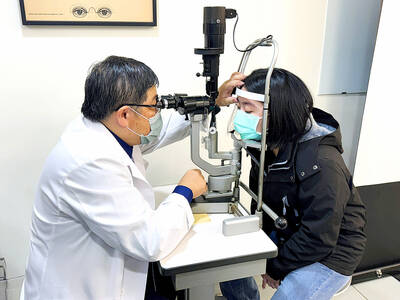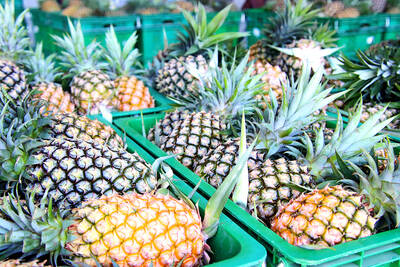Domenico Scarlatti, the sixth child of the Italian composer Alessandro Scarlatti, demonstrated a talent for musical composition and performance from a young age, and received a comprehensive musical education from his father. His keyboard works espoused outstanding technique, including hand-crossing, voice-exchange, jumps of two octaves or more, rapid arpeggios and nimble alternation of fingering for the same note.
Certainly, exquisite playing technique is a defining characteristic of Scarlatti’s keyboard sonatas, but at the same time one cannot overlook the influence on the composer of Spanish and Portuguese folk music and the guitar playing that was so prevalent in the Iberian Peninsula, where Scarlatti lived from his 30s.
During the Baroque period, keyboard music and plucked string instruments such as the guitar were intimately related, as the harpsicord employed a lever mechanism in which the strings inside the instrument are plucked by quill plectra triggered by pressing a key, in much the same way as a plucked string instrument, placed horizontally, would produce notes.

Photo: Wikicommons
照片:維基共享資源
During his life, Scarlatti wrote 555 keyboard sonatas, the vast majority of which were composed during the time he was musical director for the Spanish and Portuguese royal courts. At the time, the Portuguese monarch entrusted Scarlatti with his daughter Maria Barbara’s musical education. The princess was to be married to the Spanish prince, Fernando, and Scarlatti would accompany the princess on her travels around the peninsula, soaking in the customs and traditions of the local populace and drinking in traditional Spanish music.
Scarlatti’s harpsicord pieces command an important place in the history of Western music. His borrowings from the folk music tradition of the Iberian Peninsula, together with the innovative keyboard playing techniques he introduced, had a significant impact on later composers and piano virtuosos such as Chopin, Brahms and Bartok. Quite distinct from the polyphonic compositions popular in his day, the majority of Scarlatti’s keyboard pieces employed a single melodic theme to construct a simple binary form structure consisting of two sections, usually repeated.
In concerts today, the performer will generally open the programme with several Scarlatti sonatas according to their own preference, or which best reflect their personality, or perhaps bring their own creativity to play and combine several works to embody an invigorating musical journey.
(Translated by Paul Cooper, TAIPEI TIMES)
多明尼哥‧史卡拉第是義大利歌劇作曲家亞歷山大‧史卡拉第的第六個孩子,從小展露出作曲與演奏才華,在父親薰陶下接受完整的音樂教育。他的鍵盤音樂作品展現出卓越的演奏技術,包括雙手交叉、交換聲部的彈奏、超過八度音的跳奏、又或是快速的分解和弦,以及靈巧地使用不同手指重複彈奏同音。
如果說華麗的演奏技巧是史卡拉第鍵盤樂器奏鳴曲的特色,那更不能忽略這位作曲家三十歲後長居伊比利半島,從西班牙與葡萄牙的民俗音樂,以及當地盛行的吉他演奏中汲取的養分。
在巴洛克時期,鍵盤樂器與吉他等撥弦類樂器有著密切關聯,原因就在於古大鍵琴是藉由按鍵觸發槓桿機制,讓樂器內部以鳥類羽管作成的撥片彈奏琴弦,就像是平放的撥弦樂器。
史卡拉第畢生寫下五百五十五首鍵盤奏鳴曲,絕大多數創作於擔任西葡兩國的皇家音樂指導期間。當時的葡萄牙國王將公主瑪麗亞芭芭拉的音樂教育託付給他。公主被許配給西班牙王國的費南多王子後,便經常帶著史卡拉第隨行,讓這位作曲家遍覽伊比利半島的風俗民情,並且耳濡目染於西班牙的傳統舞宴音樂。
史卡拉第的大鍵琴作品在西方音樂史上佔有相當重要的地位;他對伊比利半島當地雅俗音樂的援引,以及革新的鍵盤彈奏技巧,深深影響著包括蕭邦、布拉姆斯、以及巴爾托克在內的後輩作曲家暨鋼琴好手。史卡拉第的鍵盤作品迥異於當時流行的複調音樂,大多採取單一旋律主導,結構為簡單的二段曲式,也就是由兩段樂句組成,經過各一次反覆。
在今日的音樂會中,演奏者經常依個人喜好或性格表現從中挑選幾首作品開場,或是運用巧思,將多曲組合成為一段生氣勃勃的音樂行旅。
(台北時報章厚明撰)

A: Recently, I’ve been seeing mosquitoes flying around in front of my eyes. The doctor said it’s the “flying-mosquito disease.” B: Flying mosquitoes? What a strange name. A: They’re actually called “floaters” in English, meaning floating debris. When fibrous substances in the vitreous body inside the eyeballs increase, floaters can appear in the visual field. B: Oh my goodness. Can you get rid of them? A: According to ophthalmologist Horng Chi-ting’s research, taking the enzymes of certain fruits is likely to help reduce floaters. A: 我最近一直覺得眼前有蚊子飛來飛去,結果醫生說是「飛蚊症」。 B: 飛蚊症?好奇怪的病名。 A: 英文名稱叫「floaters」, 也就是漂浮物的意思。 因為眼球的玻璃體中纖維化物質增多,導致視野出現漂浮物。 B: 天啊!要怎麼把蚊子趕走? A:

Bilingual Story is a fictionalized account. 雙語故事部分內容純屬虛構。 I stand by the Miluo River as dusk falls. The court betrayal is too much. I served Chu with loyalty. I forged alliances and fought corruption. But the whispers of jealous courtiers, the murmurs of treason, spoke louder. The king cast me out. The water looks calm. It promises peace. I step in. The river is cold against my legs. I hear shouts behind me — fishermen calling my name. I keep walking. The calls grow louder, but I do not turn around. The water rises to my chest. It pulls at me. I

In Taiwan, people can use a platform to rent a power washer for a weekend or share unused garage space for someone’s storage needs. These are examples of the sharing economy, a consumption model that has gained widespread adoption worldwide. This approach allows people to rent or share assets like cars, homes or even services, typically through online platforms. This innovative model poses a simple yet powerful question: why purchase infrequently used items when sharing is more practical? By making useful but idle resources accessible, the sharing economy turns them into sustainable opportunities. Internationally, platforms like Airbnb and Uber have popularized

A: What types of fruit enzymes should we take to help reduce eye floaters? B: According to a study published in the “Applied Sciences” journal by Taiwanese ophthalmologist Horng Chi-ting, pineapple, papaya and fig supplements can improve symptoms. A: Pineapples are in season now, so you should munch on more of those to get rid of floaters. B: Not quite. Enzymes can be damaged by our stomach acid if we eat the fruit directly. The doctor says taking fruit enzyme capsules is better for absorption. A: Most importantly, we should reduce our use of personal electronics to prevent floaters from